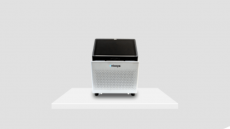'Connectivity is a key enabler for continuous manufacturing'

“Adoption of continuous perfusion operations, for example, has shown increases in productivity, but to realize the benefits of the upstream gains, the downstream unit operations must keep pace with the increased mass of protein being produced from the bioreactor. Connectivity of the upstream and downstream without interruption will maximize benefits. This requires robust process, analytics, and automation technologies to quickly adjust the process on demand,“ Merrilee Whitney, head of the BioContinuum platform, Merck, told BioPharma-Reporter.
How deeply entrenched are continuous processes currently in biopharma manufacturing, and what is behind this trend?
“We are seeing a rise in the adoption of continuous processing steps in the biopharmaceutical manufacturing sector such as perfusion, multi-column chromatography and flow through polishing,” she remarked.
Merck, continued Whitney, expects to see this trend expand as regulatory acceptance increases and technology to control and automate connected unit operations evolves. “The evolution of process and data analytics with machine learning (ML) and artificial intelligence (AI) will drive advancements in digital maturity and the reality of fully digital and adaptive manufacturing facilities towards ‘lights out’ manufacturing.”
Centralizing management processes
In terms of what she sees as the biggest bottleneck in the biopharmaceuticals production process today and how Merck’s centralized viewing platform, Orchestrator, can address such challenges, Whitney said:
“Many manufacturing facilities still operate as ‘islands of automation’ with multiple hardware systems, each with their own programmable logic controller. Management of the process and systems requires physical interaction with each individual system for data visualization, alarm management, recipe management, user management, etc.
“Bio4C Orchestrator allows for these activities to be done outside of the manufacturing environment via a single, browser-based platform.
"This allows for rapid startup of new processes via centralized recipe management and deployment, visibility and management of unit operations in real time, and management of the process from any location.
"The modular and scalable architecture of the platform is designed to grow and evolve with the manufacturing needs of the customer, but also ready to advance with the rapidly evolving space of digital solutions.”
















